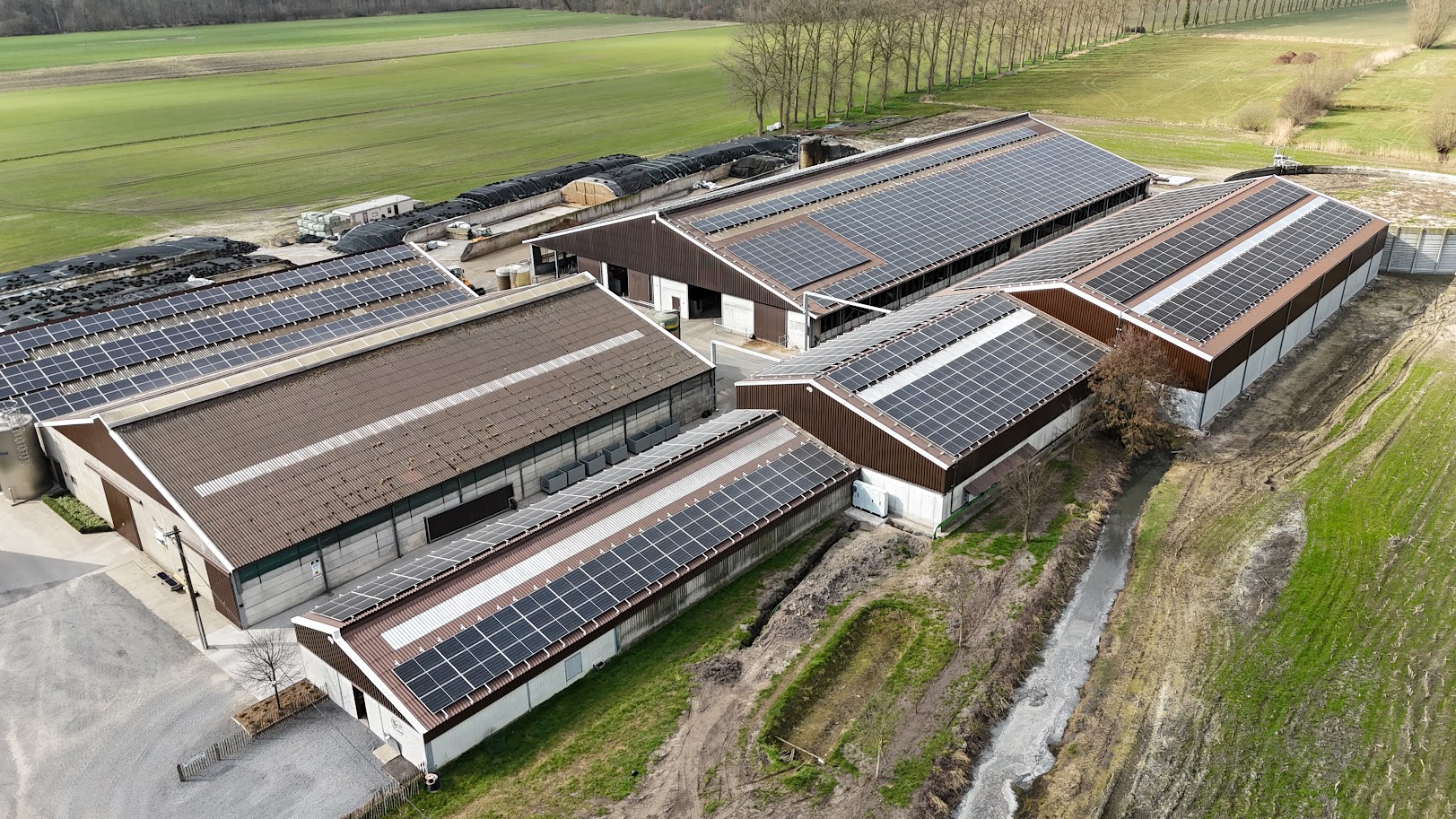Langemark, Lievegem, Zwevegem, Diegem, Gembloux, Aalst, Antwerp and Huizingen – 7 May 2025 - Data center company LCL is bringing a new solar park into use. This solar park, which has been constructed on the roofs of buildings located at four different farms, has a capacity of 3.4 MW and will be able to generate 3.0 gigawatt hours of energy every year. The total investment comes to around EUR 3 million. This innovative project - a Belgian first - was set up in collaboration with developer Nett Energie and B2B energy supplier Elindus. Corporate power purchase agreements (CPPAs) are now embedded in Belgium's local communities, and some of the green energy generated by the solar park will be used by the farms for their own projects, such as a battery-powered automatic feeding system in Lievegem (East Flanders).
LCL has taken another significant step forward in ensuring its own energy supply. A new solar park, consisting of four plants installed on the roofs of buildings at four farms in East Flanders and West Flanders, has been brought into use by the company. Together, the four plants form a single solar park with a capacity of 3,410 kWp (3.4 MW) and combined expected annual power generation of 3.0 GWh. The solar park consists approximately 6,000 solar panels, spread over a total roof area of some 30,000 m². This innovative project can inspire business owners throughout Belgium to create their own solar parks that have firm roots in local communities.
The project marks another milestone for LCL, which is now well on its way to achieving its target of being able to generate enough power to meet 40% of its energy needs by 2030. The solar park represents an investment of some EUR 3 million. In February, LCL expanded its green energy supply by adding three wind turbines of its own. The combination of solar and wind power is strategic. The two power sources are complementary, since windier weather is usually accompanied by less sunshine. As a data center company, LCL uses electricity continuously, and so all the power that is generated is used immediately.
LCL has consciously opted for a solution based in Belgium so that it can support the local economy while pursuing its own sustainability goals. Finding open space for solar parks in Belgium is not easy, and purchasing energy generated offshore or outside Belgium through a CPPA can be expensive, which means it is not an option for every SME. A solar park located on surfaces with unused potential - the roofs of business premises, storage sheds, livestock sheds, and so on - is a win-win situation.
Thanks to economies of scale, the farms will also enjoy lower, stable energy prices, enabling them to implement their own automation projects and/or step up their nature-based farming activities. On average, 7% of the power generated in this way will be purchased by the farms, covering around 50-60% of their energy needs. ‘We were already using milking robots to milk our cows', said Dirk Van Haele and Leen Dellaert of Van Haele-Dellaert, a dairy farm in Lievegem (East Flanders). ‘However, once we knew we would have access to so much green energy we also opted for an automatic cow feeding system. That system is based on mobile robots powered by batteries, and now we can charge those batteries relatively cheaply.’

For the purpose of this CPPA, LCL partnered up with Nett Energie (a solar and battery park developer) and Elindus (a B2B energy supplier). Nett Energie looked for suitable roofs with untapped potential in Belgium on LCL's behalf. The aspects it took into consideration included generation potential, the amount of energy consumed and the owners’ needs when it comes to renewable energy. Nett Energie found four suitable locations: in Waarschoot (Lievegem) in East Flanders, and in Langemark and Zwevegem in West Flanders.
Elindus will make sure the solar energy generated by the four PV plants is supplied to LCL's data centers - and billed - correctly and automatically. Elindus has also created a dashboard for them, which provides comprehensive generation and consumption information on LCL's solar parks and the three wind turbines. Actual generation will be adjusted every quarter of an hour to bring it into line with the amount of energy consumed. LCL's existing and future carbon footprint can also be examined using the LCL dashboard. LCL can use this dashboard in future green energy projects, moreover, to monitor its carbon footprint precisely and access all relevant figures for reporting purposes.
‘We have decided to go for additional generation, rather than buying up existing capacity’, said Laurens van Reijen, Managing Director of LCL Data Centers. ‘We want to obtain the highest possible sustainability certification, which means generating additional green energy is essential. At LCL, we also want to link the generation of energy to its production in order to maximize the use of renewable energy sources and contribute to a more balanced electricity grid. And we are going to incorporate our energy production and consumption dashboard in our customer portal so we can share it transparently with our customers’.
‘In any case, we will continue to invest in generating green energy. At the moment, the amount of energy we generate is enough to cover around 40% of our needs during the summer period, but not on a year-round basis. And even after we have achieved our goal of generating enough energy to cover 40% of our needs on average, we will still need more green energy. AI, for instance, uses a huge amount of processing power and therefore computational power, which devours electricity,’ Laurens van Reijen explained.
This investment is perfectly in keeping with LCL’s objectives relating to the CSRD, and will help to achieve the following: